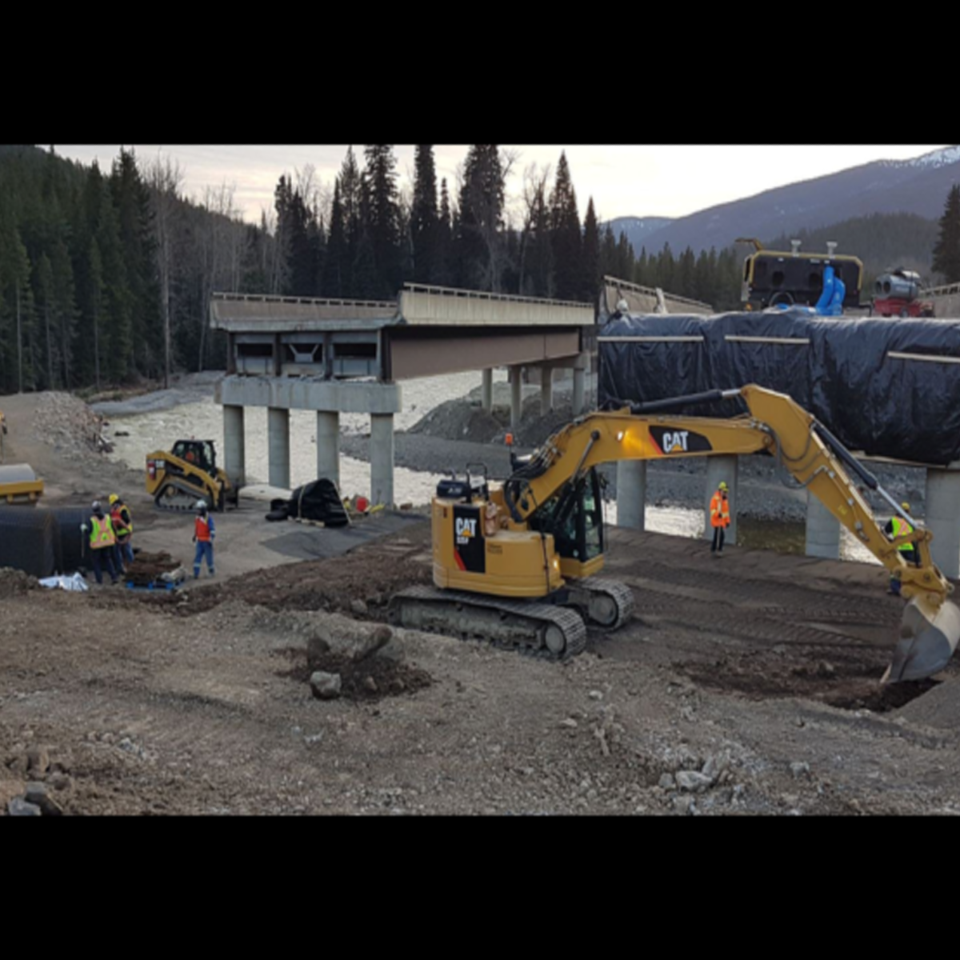The Coquihalla Highway was closed between Hope and Merritt on Nov. 14, 2021. Flooding destroyed the Coq in more than 20 places. Temporary work allowed it to open after eight weeks. Full restoration will take 10 months.
History
The first ‘Coquihalla Highway’ was an Indigenous trade route north from the coast to the interior and south to the Columbia. It was used from May to October and impassible in winter.
In the 1860s Gold Prospectors followed the route north. In the 1870s the route was used to move cattle to the coast from Interior Ranches. In 1914 the Kettle Valley Railway followed the route and in 1958-59 the Trans-Mountain pipeline followed the route.
The Kettle Valley Railway opened their Coquihalla Sub-division in 1916, from Hope to Brodie Wye near Merritt. The KVR then connected east and south to Princeton.
50 feet of snow accumulates on the Coquihalla in winter. The Kettle Valley Railway tried to operate where snow often falls at a rate of 10 centimetres (4 in) per hour. Too challenging.
As Darren Critchley writes on his Internet Page, Touring the Kettle Valley Railway “It was one of the most difficult sections of railway to maintain in North America, with annual snowfalls in excess of 50 feet, rock slides and forest fires.”
Darren also wrote, “… due to washouts, landslides, forest fires and the immense amount of snowfall each winter…” the route was “… abandoned”. Trains were sent west from Merritt to Spence’s Bridge.
The Kettle Valley Railway ceased operation in 1960.
The Coquihalla Highway – Completed in 1986
B.C. residents and Merritt and Kelowna business people lobbied for a highway along the Coquihalla route from Hope to Merritt – and from Merritt to Kamloops in the North and Peachland in the Okanagan. A new highway would shave hours off a Vancouver trip.
Truckers needed an alternate to the Trans-Canada Highway through the Fraser Canyon.
Although pure conjecture, Okanagan property development may have helped. In 1980 the population of Kelowna was 60,000. With the construction of the Coquihalla and the Connector (97C) a trip to Vancouver was only 3 hours. The new road enhanced tourism and development. Today the population of Kelowna and area is 180,000. (B.C. Premier Bill Bennett lived in Kelowna.)
Construction began at Hope in 1984. It reached Merritt in 1986. The 115 Kilometer section has 38 bridges. The budget was $250 Million but cost over-runs meant it cost $400 million. The Bennett government denied the cost overruns for years.
The Hope to Merritt section of the Coquihalla is the deadliest highway in B.C.
Destruction of the Coq – November 2021
History and Climate Change collided over the Coq, November 14 and 15, 2021. More than 200 millimetres (7.9 in) of rain fell in the catchment area. Historically the precipitation would have fallen as snow and rain. But because it was rain the runoff was immediate and devastating.
Old-timers who built and operated the Kettle Valley Railway, Coquihalla Sub-Division would not be surprised by the devastation.
Climate Change? Since 1950, worldwide, there are millions and millions more internal combustion engines polluting the atmosphere. That has to create problems. Did pollution effect precipitation in November 2021 resulting in more rain than snow?




